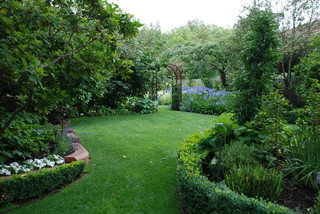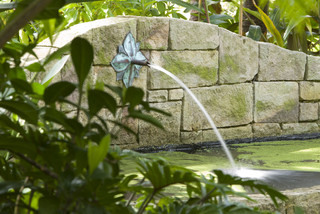As the spring weather unfolds our gardens gradually come back to life. And a good action plan will allow you to maximise all the lovely new growth that’s happening in the garden. September is a good time to feed lawns and plants, trim shrubs, divide perennials, re-pot container plants, clean out ponds and plant flower seedlings.
1. Feed and drain lawns
To keep grass growth strong throughout summer, feed lawns now with either a special slow-release lawn mix high in nitrogen or an organic seaweed-based liquid fertiliser.
If drainage has been bad over winter, especially if your lawn is on clay soil, improve it by using a pitchfork to make holes and work coarse sand into them. Use the same method to add well-rotted compost to light, sandy soils that don’t hold nutrients very well.
2. Plant gladiolus and dahlia
Both flowers need a sunny position as well as shelter from strong winds. Soil should be well-drained with an open, friable structure.
Add plenty of well-rotted organic matter to soil before you plant. Position gladioli corms 10cm deep and 20cm apart. Just before buds appear it’s a good idea to stake gladioli so wind doesn’t damage the tall flowers.
3. Prune flowering shrubs
Trim late winter flowering plants such as camellia, flowering quince (Chaenomeles), Michelia and magnolia when they have finished blooming. Trim off crossing or diseased branches and lightly shape plants.
4. Gather self-sown seedlings
Many plants such as aquilegia, alyssum, Dietes, foxglove, hellebore (shown here) and other perennials drop seedlings that pop up in the garden in spring. Allow them to put on a few sets of leaves, then move into places where you’d prefer them to grow. Groups of each of these types of flowers planted en masse look more interesting because they allows you to appreciate their flowers and foliage better.
5. Clean out ponds
Spring is a good time to give ponds a tidy up so the water is crystal clear throughout summer. Scoop out dead leaves and decaying plant matter which has built up over winter. This will turn the water toxic if left in the pond during the warmer months. Also, divide up waterlily clumps that have become too large and replant into baskets with new aquatic compost.
To have a balanced ecosystem ponds need a mix of oxygenating, floating and marginal plants. But take care not to over plant.



